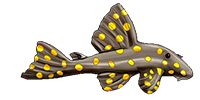https://ir.uitm.edu.my/id/eprint/104442/
PDF: https://ir.uitm.edu.my/id/eprint/104442/1/104442.pdf
The invasive suckermouth catfish ( spp.), commonly known as the pleco, janitor fish, or ikan bandaraya is a species native to South America but has become widespread in various water bodies across the globe, including Malaysia. The invasion of suckermouth catfish in Malaysia has caused significant ecological and economic impacts.
...
These non-native fish have established themselves in various freshwater ecosystems, outcompeting native species for food and habitat. Their burrowing behaviour destabilises riverbanks, leading to increased sedimentation and erosion, which negatively affects water quality and the health of aquatic habitats.
...
Various products can be derived from suckermouth catfish, each offering unique economic opportunities.





